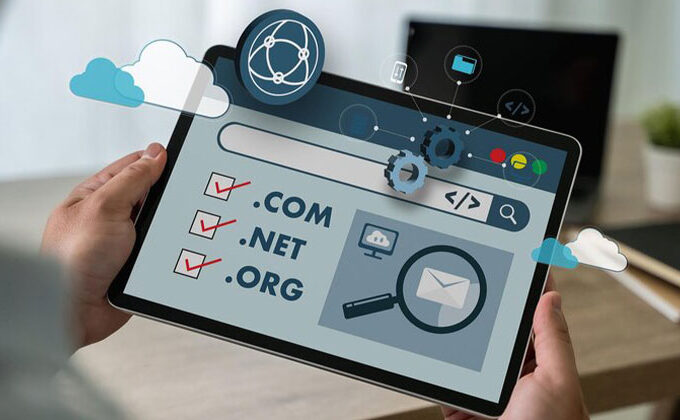What is a Client Relationship Partner?
A client relationship partner is the main source of communication between a company and its clients, with a focus on building relationships over time instead of simply closing deals.
This important role extends beyond the traditional accounts management by adopting an approach of consultation to know the client’s needs and objectives.
In firms that provide professional services such as accounting, law, and consulting firms, the customer relationship partner usually holds an upper position, with the power to mobilise resources throughout the company.
They serve as trusted advisors who represent clients internally while promoting the capabilities of the company externally.
Importance of Client Relationship Partners in Driving Growth
Driving Business Growth Through Client Retention
Research shows that keeping existing customers is cheaper than buying new ones. As per Harvard Business Review, increasing customer retention by only 5percent can increase profits by 25 to 85%. Customer relationship partners directly impact these numbers through:
- Reducing client churn by proactive relationship management
- Maximizing the value of your account through a knowledge of client requirements
- Generating additional revenue streams via cross-selling opportunities
- Generating referrals from satisfied clients
Building Competitive Advantage
In a world where goods and services are becoming increasingly competitive, the quality of client relationships is an important factor to differentiate. Successful client relationship partners provide competitive advantages through:
- Building trust and establishing credibility that rivals can’t easily duplicate
- Gaining exclusive insights into the operations of clients and their needs
- Making switching costs less expensive through a deep integration of the client’s process
- Building personal connections that transcend the boundaries of transient relationships
Also read: 10 Best Client Management Software for Sales & Support Teams
Key Features of Successful Client Relationship Partners
Strong Communication Skills
Convey ideas, listen actively, and maintain open, transparent dialogue with clients.
Client-Centric Mindset
Focus on understanding client needs, goals, and challenges to deliver tailored solutions.
Trust and Reliability
Build long-term relationships through consistent follow-ups, honesty, and dependable service.
Strategic Thinking
Align client needs with long-term business goals to create value beyond transactions.
Problem-Solving Ability
Proactively identify issues and deliver efficient, practical solutions.
Industry and Product Knowledge
Deep understanding of both the client’s industry and your company’s offerings.
Adaptability
Quickly respond to changing client expectations or market dynamics.
Collaboration Skills
Work seamlessly with internal teams and external stakeholders to serve the client better.
Analytical Insight
Use data and feedback to refine strategies and enhance the client experience.
Commitment to Growth
Continuously seek ways to improve the client relationship and drive mutual success.
How to Build Strong Client Relationships
1. Understand Your Client’s Business Deeply
The superficial knowledge of a person isn’t enough to create meaningful partnerships. Make sure you:
- Examine the industry of the client, competitive position, and trends in the market
- Annual reviews release press releases, strategic announcements,
- Follow top managers on social media networks
- Know their structure and the decision-making process
A McKinsey study showed that B2B customers appreciate suppliers that demonstrate an in-depth knowledge of their business environment 2.5 times more than suppliers who do not.
2. Establish Clear Communication
The structure of communication can prevent relationship drift:
- Establish expectations for meeting frequency and communication method
- Make a stakeholder mapping to identify the most important contacts and their preferences
- Conduct regular business reviews that go beyond discussions on specific projects
- Create escalation procedures for urgent situations
3. Deliver Consistent Value Beyond Transactions
Client relationship partners need to continually show their worth
- Provide relevant insights from the industry and information about competitive threats
- Introduce your clients to valuable professional connections
- Offer educational opportunities through seminars or workshops
- Identify process improvements even if they don’t bring immediate revenue
4. Identify Issues Before They Arise
Don’t wait until clients bring up issues:
- Examine regularly the risk areas within the relationship
- Be aware of metrics for service delivery before they cause problems.
- Conduct regular health checks on your relationship
- Get feedback from all stakeholders, not just the primary contacts
5. Personalize the Relationship
The business relationship is still a reality between people:
- Keep track of personal information and preferences
- Honor significant milestones and achievements
- Customize the style of communication to each stakeholder
- Find ways to show gratitude
Also read: Client Bookkeeping Solutions: Improve Business Efficiency
Common Challenges for Client Relationship Partners
- Maintaining Consistent Communication: Balancing multiple clients while ensuring regular, personalized touchpoints.
- Managing Client Expectations: Aligning what clients want with what the business can realistically deliver.
- Handling Difficult Conversations: Navigating conflicts, missed deadlines, or underperformance with professionalism.
- Building Trust Over Time: Earning and keeping client confidence, especially during setbacks or change.
- Staying Updated on Client Needs: Keeping pace with evolving business goals, market shifts, and internal changes.
- Balancing Internal and Client Interests: Advocating for clients while staying aligned with company priorities and resources.
- Time Management Across Accounts: Juggling multiple relationships without neglecting smaller or newer clients.
- Data and Insight Gaps: Lack of actionable data or feedback to guide client strategies and decisions.
- Overdependence on Key Individuals: Risk of relationship breakdowns when the partner or client contact changes.
- Scaling Relationships as the Business Grows: Maintaining the same level of personalized service during rapid expansion.
Ending point
Client Relationship Partners play a vital role in promoting growth in business, satisfaction of clients and loyalty over time. By establishing trust, delivering consistently high-quality services, and ensuring that client goals are aligned with the strategic objectives and transform client relationships into long-lasting relationships. In the current competitive environment, investing in a strong client relationship management is more than just a plan. It’s an essential element for lasting achievement.















Leave a comment